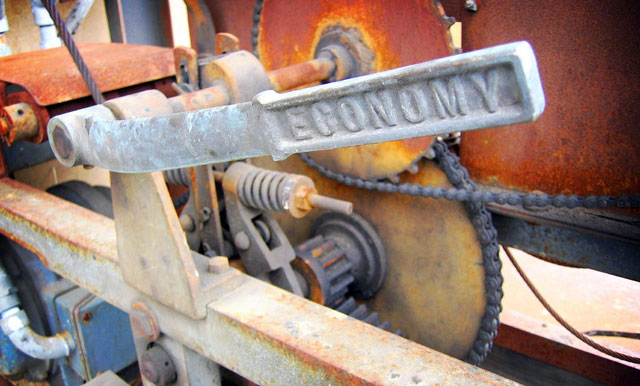
Growth in real consumer spending will likely drop to near 0% in 2016, warned First National Bank chief economist Sizwe Nxedlana.
He was commenting on the latest FNB/BER Consumer Confidence Index (CCI) released on Tuesday, which revealed that consumers are very concerned about the outlook for the ailing economy and their household finances.
The CCI slumped back to -11 in the second quarter of 2016, after edging up from -14 index points in fourth quarter of 2015 to -9 in the first quarter of 2016.
“The deterioration in consumer sentiment during the second quarter of 2016 (April, May and June 2016) came on the back of a six index point relapse in consumers’ rating of their own financial positions and a three index point slide in their rating of South Africa’s economic prospects. The time to buy durable goods index edged up by two index points from the six-and-a-half-year low of -22 reached in Q1 2016,” said the report.
It noted further that the fieldwork for the CCI survey was completed on 10 June 2016.
This was prior to the explosion of violence and looting in Tshwane, following the announcement of Thoko Didiza as the ANC’s mayoral candidate in the country’s capital; and also well before Britain voted to leave the European Union, which caused a selloff in global stocks.
“These two factors increase uncertainty about South Africa’s economic prospects and had the potential to suppress consumer confidence even more during the second half of June 2016.”
Nxedlana stated that a myriad of adverse economic forces had already been hammering the South African economy since 2015.
These, he pointed out, include political uncertainty, social unrest, very low business confidence levels, a stagnation in public sector employment, a dramatic depreciation in the rand, soaring food prices and rising interest rates.
“These headwinds were exacerbated by the debilitating impact of the widespread drought on the agriculture sector and the effect of weak global demand and subdued commodity prices on the mining sector, culminating in a 1,2% contraction in South Africa’s real GDP during Q1 2016.”
In addition, employment numbers from Statistics South Africa show that the economy shed 355 000 jobs between the last quarter of 2015 and the first quarter of 2016. Correspondingly, the unemployment rate rose from 24,5% to 26,7% — the highest rate recorded since Statistics South Africa commenced with the Labour Force Survey in 2008.
“In light of the slump in economic activity and decline in employment levels, it is therefore not surprising that consumers made a further downward adjustment to their ratings of the outlook for the South Africa economy and their household finances,” said the report.
A breakdown of the survey results according to household income group reveals diverging results.
The consumer confidence levels of high income consumers (earning more than R7 000/month) improved from -10 to -6 index points, but low income confidence levels (earning less than R7 000) plunged from -8 to -15 index points in Q2 2016.
The survey noted that the sharp fall in consumer sentiment among the lower income group can be ascribed to a significant (7 index point) downgrade in their rating of South Africa’s economic prospects and a startling (10 index point) decline in their rating of their household finances.
By comparison, the financial prospects sub-index of the CCI for high-income consumers only declined by one index point to +11, which widened the gap considerably compared to the -3 recorded for the financial prospects index of low-income consumers.
“The alarming increase in South Africa’s unemployment rate and rapidly rising food inflation — and more recently also fuel prices — are now exacerbating the impact of pervasive income inequality on low income households,” said Nxedlana.
According to Statistics South Africa, food inflation surged from 5,2% year on year (y/y) in the fourth quarter of 2015 to a big 11% in April/May 2016, while the petrol price rose by nearly R1,50/l (13%) between March and June 2016.
Low-income households spend a proportionally larger share of their budgets on food and transport costs compared to higher income households and therefore typically bear the brunt of the impact of higher food and fuel prices.
In addition, a disproportionately large share of the job losses during the first quarter of 2016 occurred among traditionally low skilled/lower-income occupations such as domestic workers, elementary workers and workers in the informal sector compared to job gains among employees in the relatively higher remunerated professional or management positions.
In contrast to the economic outlook and financial positions indices, the time to buy durable goods sub-index of the CCI edged up slightly from -22 — the lowest level since the 2008/2009 recession — to -19 index points in the second quarter of 2016.
Nxedlana pointed out that the fact that the South African Reserve Bank did not raise interest rates again following consecutive interest rate hikes at the previous three monetary policy committee meetings, in November, January and March may have helped to stem the tide in terms of the time to buy durable goods index.
However, the vast majority of consumers across all household income groups still consider the present time as the wrong time to buy durable goods.
The second quarter decline and exceedingly low level of the FNB/BER CCI mirrors the deterioration in the RMB/BER business confidence index during the second quarter of 2016, which dropped to its lowest level since the 2008/2009 global financial crisis and recession.
In particular, the business confidence levels of South African retailers plunged to the lowest in 15 years, as weak demand and soaring input costs eroded their profitability levels.
“Unfortunately, given that inflation is set to accelerate further on the back of the drought-induced rise in domestic grain prices and sustained weak rand exchange rate, the purchasing power of most households will likely wane further in coming months,” warned Nxedlana.
“With little support expected from policy makers (currently tightening on both the monetary and fiscal fronts), we expect the growth in real consumer spending to slump from a meagre 1,7% in 2015 to near 0% in 2016.”



